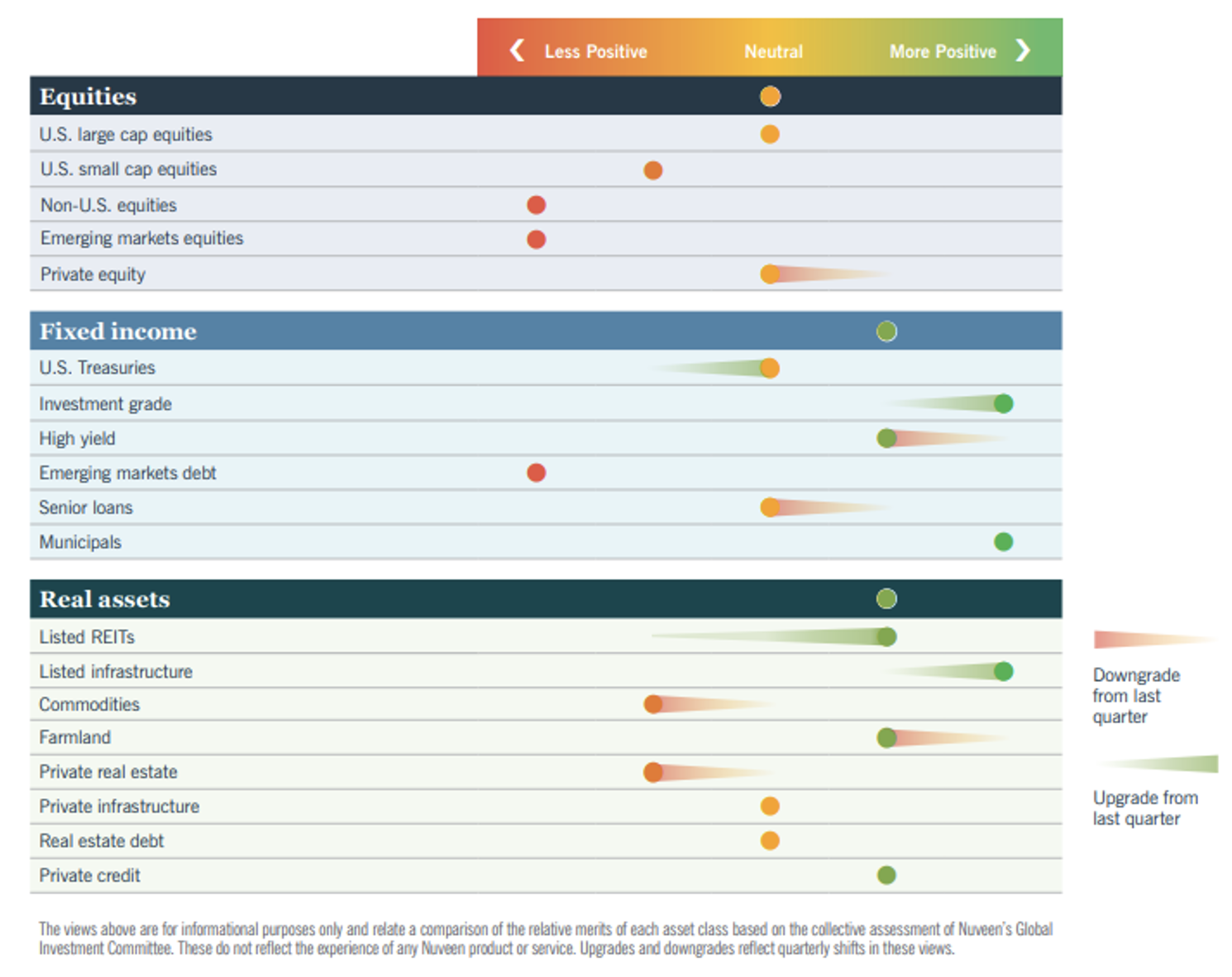Key Takeaways
• Inflation and pressure from interest rate hikes are likely to ease in 2023, but recession risks are growing. Our base case is for a mild recession in the U.S., but a worse environment in Europe.
• We believe investors should focus on non-cyclical asset classes and investments that are less correlated with economic growth.
• We suggest modestly extending duration and carefully assessing the balance between public and private markets given the sharp public markets selloff.
Entering the fourth quarter of 2022, our outlook acknowledged a hard truth for investors nursing wounds from the steep market downturn: We’re not out of the woods yet. That theme still holds, but the contours of the investment landscape have evolved. One primary obstacle—stubbornly elevated inflation—looks a little less imposing, while another—a projected recession affecting countries around the globe—has been brought into sharper relief.
In the U.S., we think inflation peaked in October, with both headline and core CPI readings showing significant year-over-year declines. This was the data investors had long been waiting for, and they expressed their approval by sparking outsized relief rallies. This initial descent from the inflation summit is welcome, but it takes more than one data point to make a trend. And even a downhill climb can have its treacherous moments.
Meanwhile, the second main obstacle—a recession widely seen as inevitable—looms as large as ever. The shift from inflation risk to recession risk reflects the impact of aggressive monetary tightening by the world’s central banks, which have fixated on inflation-fighting at the expense of economic growth. Even with inflation starting to moderate (at least in the U.S.), there is no guarantee that central bank policy rates will follow suit. In fact, in November, Fed Chair Jerome Powell conveyed that rates are likely to remain “higher for longer”—posing continued challenges to the economy and investment markets.
Which asset allocation decisions may be best suited to this shifting backdrop? We suggest emphasizing these central themes:
• Adopt a less cyclical stance. The increased likelihood of a recession, and the price deflation that would accompany it, poses a risk to already challenged corporate revenue growth. In equities, this makes us more cautious toward cyclical areas, while favoring quality, dividend growth and public infrastructure.
• Strengthen core bond holdings. After an atypical year in which bonds failed to provide meaningful diversification benefits or ballast to portfolios, we think conditions now warrant a modest increase in duration through higher-quality investment grade credit and municipal bonds.
• Carefully assess public vs. private allocations. While most public markets were broadly and deeply negative in 2022, private markets were relatively insulated from the turmoil. As a result, some investors may feel they have a potential portfolio imbalance between the two. Ultimately, the right balance between publics and privates will vary depending on investor needs and portfolio objectives. But we see differentiation across and within asset classes. Among private assets, we are highly constructive on private credit, given its defensive nature and strong fundamentals. And we also like farmland as an inflation hedge. We are seeing some growing near-term risks in areas of private real estate, while finding solid opportunities in public REITs.
On balance, the economic and market landscape in 2023 may look slightly different than it did in 2022, but investors should continue to anticipate some rough and occasionally unforgiving terrain. We invite you to read on for our perspective on opportunities to make the trek ahead.
Portfolio Construction Themes
The economic backdrop that investors have been anticipating appears to be on the horizon — easing inflation and less aggressive central banks (although the U.S. Federal Reserve is likely to continue tightening, albeit at a more measured pace), but also an increasing likelihood of recession. Our 2023 portfolio construction themes center on seeking resilience through investments that can power through a cyclical downturn and provide the ballast that has eluded investors in 2022. And, at the same time, account for the damage in public markets and the consequential imbalance in private markets.
Asset Class ‘Heat Map’
Our cross-asset class views indicate where we see the best relative opportunities within global financial markets. These are not intended to represent a specific portfolio, but rather to answer the question: “What are our highest conviction views when it comes to putting new money to work?” These views assume a U.S. dollar-based investor seeking long-term growth and represent a one-year time horizon.









